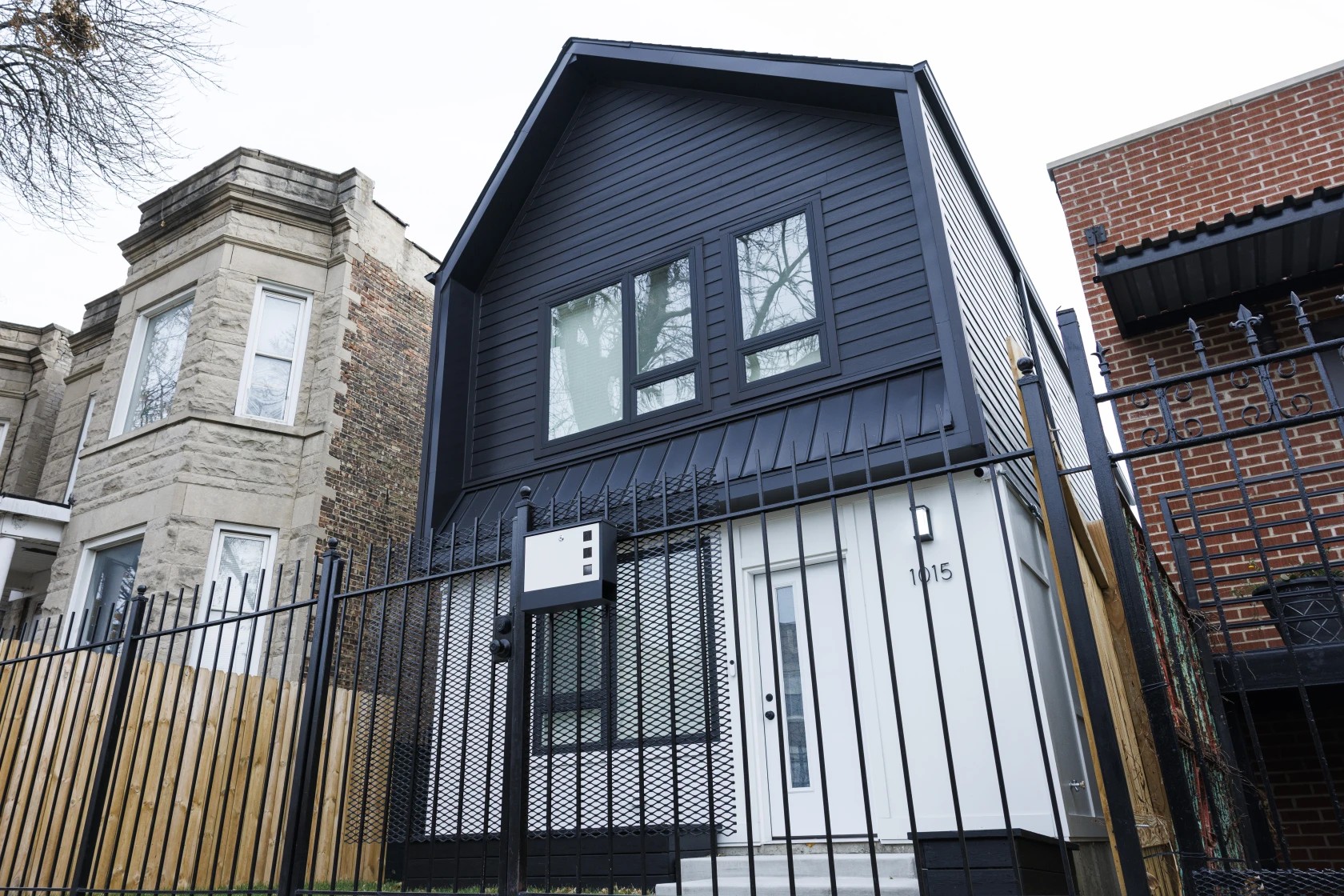With East Garfield Park Ripe For Gentrification, Residents Draw Up Blueprint To Protect Themselves

Link to full article in Blockclub Chicago
GARFIELD PARK — The West Side may get a lot of bad press about gun violence and poverty, but legacy residents of East Garfield Park have always known their neighborhood is prime real estate.
Just a 10-minute ride Downtown by the Green Line, the neighborhood is positioned within arm’s reach of the city’s major employment centers like the Kinzie Industrial Corridor, as well as some of Chicago’s best attractions like the United Center and the Garfield Park Conservatory.
And with the abundance of historic church architecture, the city’s only selective enrollment high school on the West Side, the revival of art studios and galleries and the new $34 million food business incubator, the Hatchery, East Garfield Park is ready to be recognized as a viable place for investment, small business and job opportunities.
But having seen the fates of Pilsen and Logan Square, residents know those same things that have made Garfield Park their beloved home for generations also makes the neighborhood ripe for gentrification, skyrocketing rents and the displacement of the people who made the community all that it is.
Wary of developers with their eyes on the neighborhood’s cheap buildings and vacant lots, residents have worked since last summer to devise strategies to preserve affordability in East Garfield Park indefinitely so legacy residents will be at the forefront of the development of the neighborhood. The project, Preserving Affordability Together, was convened as a pilot program by Metropolitan Planning Council in partnership with DePaul University’s Institute of Housing Studies and the Garfield Park Community Council.
After months of community meetings and working groups to define goals for the neighborhood and build strategies and recommendations for keeping the area affordable, partners held a community meeting at the Garfield Park Conservatory to unveil their blueprint of the neighborhood’s plans to stave off the displacement that has fractured communities across Chicago.
The blueprint’s strategies are driven by data analyses conducted by the Institute of Housing Studies, such as a study that showed that in 2018 East Garfield Park property values increased by 20 percent, the highest growth in the city. Their analysis found that half of households in the area make less than $25,000 annually, so the strategies are designed to maintain affordability for those families specifically.
According to Juan Sebastian Arias, a manager at Metropolitan Planning Council who worked on the project, the pilot is a new model that centers local voices by combining community engagement with technical data to make sure investments benefit current residents.
“We decided to do this in East Garfield Park because we would hear from residents that they were concerned about displacement pressures coming in,” he said. “At the same time, we know that there are at least a few key larger investments or developments happening … and in general this feeling like rents were rising.”
According to lifelong resident Stephanie Noble, it was painful watching the neighborhood change in ways that hurt people who have poured their entire lives into the community.
“These families were redlined into living in a specific neighborhood like Garfield Park,” Noble said, adding that these same residents have endured hardships like disinvestment, substandard public housing, violence and now gentrification. “Let’s insist and assure that these plans are locally driven and locally implemented. So far, this has not been the case.”
Through the engagement process, community members defined many strategies to ensure that Garfield Park attracts new investment that still benefits current residents, businesses and civic organizations by creating economic opportunity while preserving affordability. Among those, the residents identified five priority strategies that would have the greatest impact:
- Build a strong independent community coalition to build power and advance housing affordability strategies.
- Develop a community benefits strategy that requires significant new developments to provide benefits to local and legacy community members.
- Support legacy homeowners in preserving existing housing that is affordable, including property tax assistance and support for home repairs.
- Establish Limited Equity Housing Cooperatives to create ownership opportunities for low-income residents.
- Create a Community-Driven Land Trust to advance community ownership and create permanent housing affordability.
Each priority strategy in the blueprint includes specific actions tailored to the city government, to residents and to local nonprofits since each stakeholder has a different role to play.
Lifelong resident Paris Cannon is hopeful the affordability plan will help guide community members to get organized and take a stand against gentrification. And with Mayor Lori Lightfoot’s INVEST South/West initiative and pledge to eliminate poverty, Cannon is optimistic that city hall may, for the first time in recent history, follow the lead of residents and play a part in implementing some of the affordability strategies.
“To be able to open up about the idea of gentrification or displacement and seeing those disparities and actually doing something about it. It’s not just a hot button word, there’s actually teeth to it.” Cannon said. “The issue of gentrification is so layered, so complex, so deep, I do appreciate that it’s getting more traction, and even elected officials are being more vocal because it’s something you can’t ignore at this point.”



